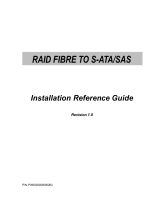
16 Introduction
NOTE: All equipment attached to the switch must be powered on before
establishing zoning. For additional switch hardware requirements, see the
manufacturer’s documentation.
7
Using MDSM, configure the cluster nodes, storage arrays, and virtual
disks. See "Configuring the Shared Storage System" on page 48.
8
Activate and configure premium features (if applicable).
Other Documents You May Need
CAUTION: The safety information that shipped with your system
provides
important safety and regulatory information. Warranty information may be
included within this document or as a separate document.
•The
Rack Installation Guide
included with your rack solution describes
how to install your system into a rack.
•The
Getting Started Guide
provides an overview to initially set up
your system.
•The
Dell Failover Clusters with Microsoft Windows Server 2008 Installation
and Troubleshooting Guide
provides more information about deploying
your cluster.
•The
Dell Cluster Configuration Support Matrices
provides a list of
recommended operating systems, hardware components, and driver or
firmware versions for your Dell Windows Server Failover Cluster.
• The operating system documentation describes how to install (if
necessary), configure, and use the operating system software.
• Documentation for any components you purchased separately provides
information to configure and install those options.
• The Dell PowerVault tape library documentation provides information
about installing, troubleshooting, and upgrading the tape library.
• Updates are sometimes included with the system to describe changes to
the system, software, and/or documentation.
• The User's Guide for your PowerEdge system describes system features
and technical specifications, the System Setup program (if applicable),
software support, and the system configuration utility.
book.book Page 16 Monday, July 25, 2011 3:18 PM





















